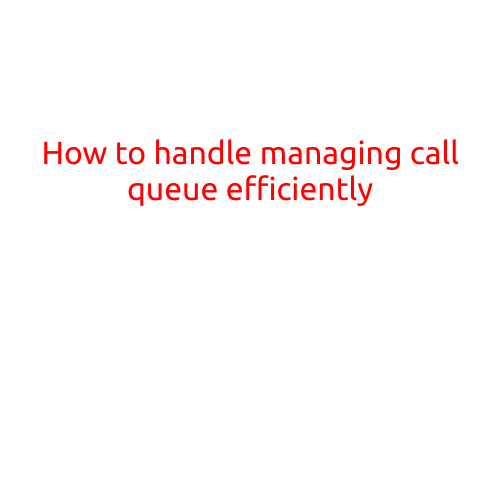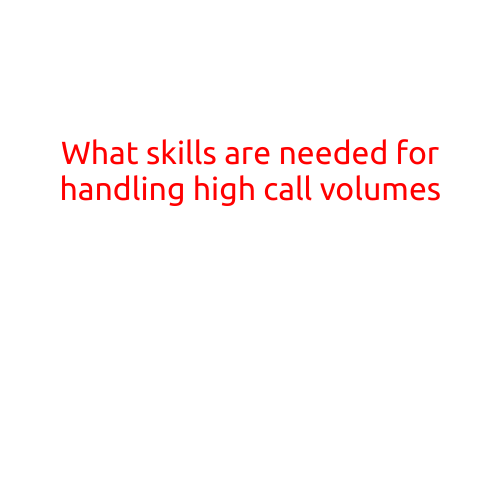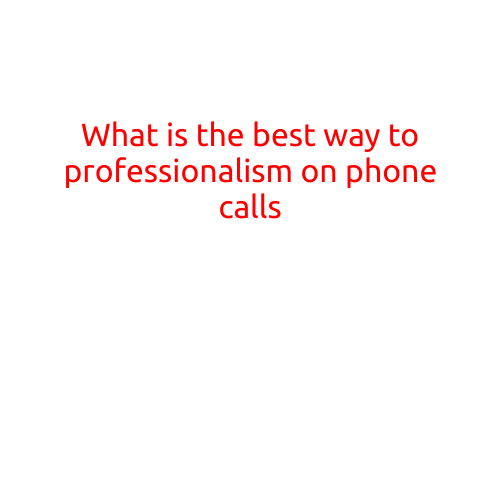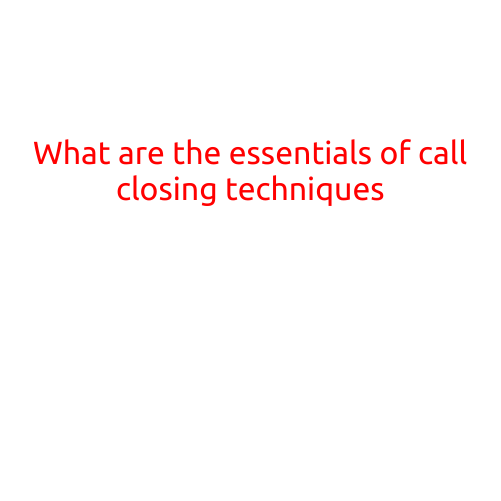
How to Handle Managing Call Queue Efficiently
Managing a call queue can be a daunting task, especially for businesses with high volumes of incoming calls. A well-managed call queue can make all the difference in providing excellent customer service, reducing wait times, and increasing productivity. In this article, we’ll explore the best practices for handling a call queue efficiently and effectively.
Understand Your Call Queue
Before diving into the strategies for managing a call queue, it’s essential to understand the scope and nature of your call queue. This includes:
- Understanding the volume of calls you receive on a daily basis
- Identifying peak call times and busiest days of the week
- Knowing the average wait time and hold time
- Recognizing the most common phone numbers and caller types
Prioritize Calls
Prioritizing calls is crucial in managing a call queue efficiently. Here are some tips to help you prioritize calls:
- Identify emergency calls and prioritize them accordingly
- Prioritize calls from existing customers or repeat callers
- Prioritize calls from high-value clients or customers
- Use a tiered priority system, such as red, yellow, and green, to categorize calls based on urgency and importance
Use Technology to Your Advantage
Technology can be a significant asset in managing a call queue efficiently. Here are some ways to leverage technology:
- Use an Automated Call Distributor (ACD) system to route and distribute calls
- Implement a Speech Recognition System to automatically answer and direct calls
- Use a Voice-over-IP (VoIP) system to reduce call setup times and increase call quality
- Utilize a call tracking system to monitor and analyze call data
Train Agents Effectively
Your call center agents are the frontline of your call queue management. Here are some tips to train them effectively:
- Provide comprehensive training on call queue management principles and protocols
- Train agents to handle multi-channel communication, including phone, email, and chat
- Foster a culture of accountability and responsibility among agents
- Encourage agents to upsell and cross-sell products or services during calls
- Continuously monitor and evaluate agent performance and provide feedback
Implement Effective Handling Strategies
Effective handling strategies can significantly reduce wait times and increase customer satisfaction. Here are some strategies to consider:
- Implement a “first-come, first-served” policy for incoming calls
- Use a “fast pass” system to expedite processing of high-priority calls
- Implement a “call back” system for customers who are put on hold
- Offer incentives to agents for meeting or exceeding service level agreements (SLAs)
- Provide a “ caller hold” system to allow agents to momentarily put a caller on hold
Monitor and Analyze Performance
Monitoring and analyzing performance is crucial in managing a call queue efficiently. Here are some metrics to track:
- Average speed to answer (ASA)
- Average talk time
- Average hold time
- First call resolution (FCR) rate
- Customer satisfaction (CSAT) scores
- Call abandon rates
By implementing the strategies outlined above, you can significantly improve the efficiency of your call queue management. Remember to continually monitor and analyze performance to identify areas for improvement and refine your strategies accordingly.





